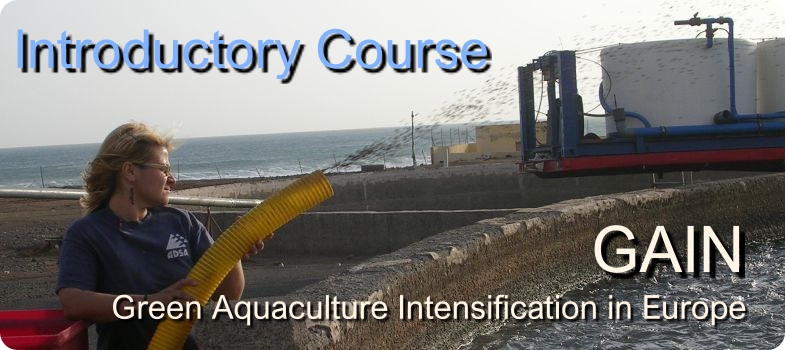What does "ecological intensification" mean?
1.1 Presentation
The concept of Ecological intensification comes from the “sustainable intensification” paradigm shift introduced first in agriculture during the last two decades.
In 2009, the Food and Agriculture Organization of the United Nations (FAO) defined sustainable intensification as follows: “Maximization of primary production per unit area without compromising the ability of the system to sustain its productive capacity. This entails management practices that optimize nutrient and energy flows and use local resources”
It was first elaborated for the agriculture sector with the aim of “simultaneously improving the productivity and environmental management of agricultural land”.
It is a relatively new concept that aims at satisfying the needs of human populations enhancing ecological balance and sustainability, and increasing animal welfare.
Since the inter-war period, and especially after the second world war, agriculture development aimed at increasing production volumes, using simplified intensive systems that rely on fossil fuels and agrochemicals.
This increase allowed to face population (and then food demand) growth but degraded ecosystems and decreased biodiversity. As a consequence, these impacts finally limited the potential of agriculture production itself.
In front of such a situation, the necessity to open new perspectives leads to …
the introduction of sustainable intensification as a way to ensure a future to agriculture, combining production increase with impacts reduction.
It pays special attention to the services delivered by the ecosystem itself (pollination, soil formation, and nutrient cycling, biological pest control, …).
The introduction of sustainable intensification is a “paradigm shift”: it breaks with classic intensification, trying to face the complexity of human activity, looking both at its needs and impacts.
Its implementation requires growing innovative expertise on “agroecosystems” that combine knowledge from various scientific fields but also from farmers’ experience.
Typical examples of sustainable intensification in agriculture are :
- Cover-cropping or intercropping with legumes to populate fields with nitrogen-fixing bacteria that improve soil fertility and increase crop yields
- Planting flower-rich habitats along field edges to support the natural enemies of crop pests, reduce crop damage, and reduce pesticide use
Ecological intensification as defined within the GAIN project derives from sustainable intensification but introduces peculiar attention to the ongoing development of ICT (Information and Communication Technology) systems.
It uses the most recent developments of Precision Livestock farming and thus aims at implementing some decision support systems relying on innovative technologies, but that can help in achieving the goals of sustainable intensification: to combine improvement of production, sustainability, and animal welfare.
Such systems can be addressed to all kinds of decision-makers, from the single farmer to public authorities.
To go further
Berckmans, D., 2004. Precision livestock farming
technologies for welfare management in intensive livestock systems. Sci. Technical Rev. Office Int. des
Epizooties 33 (1), 189–196.
https://tice.agrocampus-ouest.fr/pluginfile.php/55014/mod_resource/content/17/res/u324_Berckmans_RevSciTechOffIntEpiz.PDF
Bonmarco, R., Kleijn, D., Potts, S.G., Ecological
intensification: harnessing ecosystem services for food security. Trends in
Ecology and Evolution, April 2013, Vol. 28, N° 4.
https://doi.org/10.1016/j.tree.2012.10.012
Doré, T., Makowski, D., Malézieux, E., Munier-Jolain, N., Tchamitchian, M., Tittonell, P., Facing up to the paradigm of ecological intensification in agronomy: Revisiting methods, concepts and knowledge. Europeam Journal of Agronomy, 2017. Vol. 34, Issue 4, May 2011. pp 197-210. https://doi.org/10.1016/j.eja.2011.02.006
Lindblom, J., Lundtsrom, C., Ljung, M., Jonsson, A., Promoting sustainable intensification in precision agriculture: review of decision support systems development and strategies. Precision Agriculture, Vol. 18, pp 309-331https://link.springer.com/article/10.1007/s11119-016-9491-4
Bonmarco, R., Kleijn, D., Potts, S.G., Ecological intensification: harnessing ecosystem services for food security. Trends in Ecology and Evolution, April 2013, Vol. 28, N° 4. https://doi.org/10.1016/j.tree.2012.10.012
Doré, T., Makowski, D., Malézieux, E., Munier-Jolain, N., Tchamitchian, M., Tittonell, P., Facing up to the paradigm of ecological intensification in agronomy: Revisiting methods, concepts and knowledge. Europeam Journal of Agronomy, 2017. Vol. 34, Issue 4, May 2011. pp 197-210. https://doi.org/10.1016/j.eja.2011.02.006
Lindblom, J., Lundtsrom, C., Ljung, M., Jonsson, A., Promoting sustainable intensification in precision agriculture: review of decision support systems development and strategies. Precision Agriculture, Vol. 18, pp 309-331 https://link.springer.com/article/10.1007/s11119-016-9491-4
